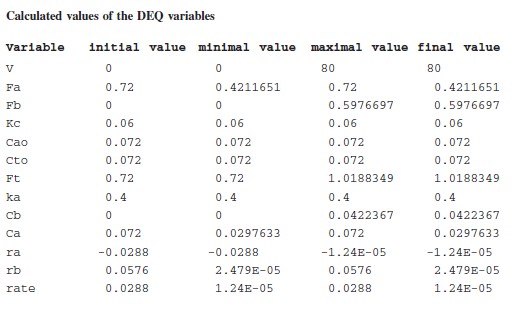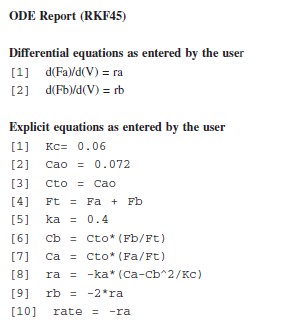
• Multiple rxns
• Membranes
• Unsteady state





species:

each species.
| As we shall see later in the book, there are some instances in which it is much more convenient to work in terms of the number of moles (NA, NB) or molar flow rates (FA, FA, etc.) rather than conversion. Membrane reactors and gas-phase multiple reactions are two such cases where molar flow rates rather than conversion are preferred. Consequently, the concentrations in the rate laws need to be expressed in terms of the molar flow rates. We start by recalling and combining Equations (R4.1-1) and (R4.1-2): | ||
 |
(R4.1-1) | |
| Used for: • Multiple rxns • Membranes • Unsteady state |
 |
(R4.1-2) |
| to give for the case of an ideal gas (Z= 1), | ||
 |
(R4.1-3) | |
| the concentration species A is | ||
 |
||
| Substituting for ν gives | ||
 |
(R4.1-4) | |
| In general (j = A, B, C, D, I) | ||
 |
(R4.1-5) | |
| with the total molar flow rate given as the sum of the flow rates of the individual species: |
||
 |
(R4.1-6) | |
| The molar flow rate of each species Fjis obtained from a mole balance on each species. |
||
| Example R4-1 PFR Mole Balances in Terms of Molar Flow Rates | ||
| Consider the elementary gas reaction | ||
 |
||
| The reaction is to be carried out isothermally (T = T0) and isobarically (P = P0) in a PFR. Express the rate law and mole balances in terms of the molar flow rates. | ||
| Solution | ||
| Mole Balance: |  |
(RE4.1-1) |
 |
(RE4.1-2) | |
| Rate law: |  |
(RE4.1-3) |
| Stoichiometry: |  |
|
| Then |  |
(RE4.1-4) |
| Combine: | ||
| Using Equation (R4.1-5) to substitute for the concentrations of A and B when T = T0 and P = P0, Equation (RE4.1-3) becomes | ||
 |
(RE4.1-5) | |
| where the total molar flow rate is just the sum of the flow rates of A and B: | 6||
 |
(RE4.1-6) | |
| and the total concentration of the entrance to the reactor (P0, T0) is calculated from the equation |
||
 |
(RE4.1-7) | |
| Combining Equations (RE4.1-5) and (RE4.1-6), we obtain | ||
 |
(RE4.1-8) | |
| and combining Equations (RE4.1-2), (RE4.1-4), and (RE4.1-8) gives | ||

|
(RE4.1-9) | |
Equations (RE4.1-8) and (RE4.1-9) can now be solved numerically, preferably by a software package such as Polymath or Matlab. Polymath will combine all these equations for us and insert the parameter values in the appropriate spots. The Polymath program and outputs are shown in Table PRS 4D-1. |
||
Table PRS 4D-1 Polymath Results

